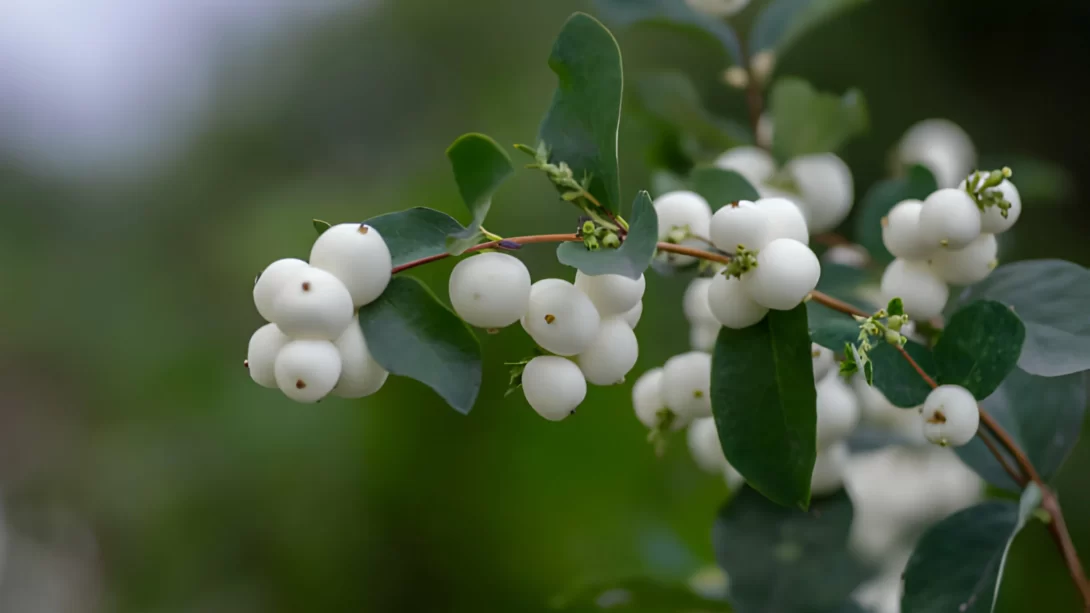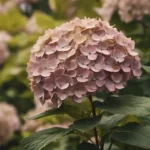Snowberries, belonging to the genus Symphoricarpos, are intriguing plants that are often found in gardens and wild landscapes. Their distinctive white berries and dense foliage make them a popular choice for ornamental purposes. Understanding whether these berries are edible is crucial for gardeners and nature enthusiasts, especially when considering the safety of introducing new plants into their gardens.
Snowberries
Snowberries are characterized by their small, pearly white berries and are part of the honeysuckle family, Caprifoliaceae. Common types include Symphoricarpos albus, known as the common snowberry, and Symphoricarpos orbiculatus, or coralberry. These plants typically grow in clusters and are found across North America, thriving in a variety of habitats from woodlands to coastal areas. Their ability to adapt to different environments makes them a resilient choice for many gardeners.
Historical and Cultural Significance
Historically, snowberries have held significance in various cultures. Native American tribes used them for a range of purposes, from making brooms to medicinal uses. In some cultures, snowberries were believed to possess spiritual properties and were used in ceremonial practices. These berries have been woven into folklore and traditions, often symbolizing purity and renewal due to their bright white color.
Nutritional Profile of Snowberries
While not as commonly consumed as other berries, snowberries do have a basic nutritional profile. They contain various vitamins and minerals, but their value is less significant compared to more popular berries like blueberries or strawberries. However, it’s important to note that the nutritional content can vary between different species of snowberries.
Edibility of Snowberries
A key question surrounding snowberries is their edibility. Generally, snowberries are considered non-edible due to their mildly toxic nature. Most species, including the common Symphoricarpos albus, contain saponins, compounds known for their soap-like properties which can cause mild to severe gastrointestinal discomfort if ingested. While not lethal, it’s advisable to avoid consuming these berries, particularly in large quantities.
Potential Health Benefits
Despite their non-edibility, snowberries have been recognized in some traditional medicinal practices. They have been used historically for their supposed anti-inflammatory and diuretic properties. However, it’s important to note that these uses are not widely supported by modern scientific research, and the potential health benefits of snowberries remain largely unexplored and unconfirmed.
Risks and Side Effects
The primary concern with snowberries is their mild toxicity. Symptoms of snowberry ingestion can include nausea, vomiting, dizziness, and stomach cramps. These effects are typically more pronounced in children and pets, who may be more likely to consume the berries due to their attractive appearance. As with any plant known to contain toxic substances, it’s crucial to exercise caution and keep snowberries out of reach of vulnerable individuals.
Culinary Uses (If Applicable)
Despite their toxicity, there are a few instances where snowberries have been used in culinary applications. Some indigenous cultures have been known to process the berries in specific ways to reduce their toxicity, using them in small amounts as a flavor enhancer or medicinal ingredient. However, these practices are not common, and it is generally not recommended to use snowberries in cooking due to the risks associated with their consumption.
Cultivating Snowberries in Your Garden
For those interested in growing snowberries, it’s worth noting that these plants are relatively easy to cultivate. They prefer well-drained soil and can tolerate a range of light conditions, from full sun to partial shade. Snowberries are hardy and resilient, often used in landscaping for erosion control or as natural borders. Regular pruning is recommended to maintain a desirable shape and prevent overgrowth, as these plants can become invasive if not properly managed.
Ideal Conditions for Healthy Plants
To ensure healthy growth, snowberries should be planted in areas with moderate moisture. They are drought-tolerant once established but benefit from occasional watering during prolonged dry periods. Fertilizing is typically not necessary, as snowberries are adapted to grow in nutrient-poor soils. Be mindful of their spreading habit and consider planting them where they have room to grow or can be easily contained.
Frequently Asked Questions
- Can snowberries be used as a food source for wildlife? Yes, while not suitable for human consumption, snowberries are often eaten by birds and small mammals, making them a valuable addition to wildlife gardens.
- Are snowberries poisonous to pets? Snowberries are mildly toxic and can cause gastrointestinal distress in pets if ingested. It’s advisable to monitor pets around these plants.
- How can I identify snowberries? Snowberries are identified by their small, white, globe-shaped berries and oval-shaped leaves. They often form dense clusters of foliage.
- Can I use snowberries for medicinal purposes? Due to their toxicity and lack of substantial scientific backing, it is not recommended to use snowberries for medicinal purposes without professional guidance.
Conclusion
Snowberries, with their distinctive appearance and adaptability, are a fascinating addition to gardens. However, their edibility is a significant concern due to their mild toxicity. While they offer ecological benefits and historical interest, it’s important for gardeners to be aware of the risks associated with these berries. By understanding these aspects, gardeners can make informed decisions about incorporating snowberries into their landscapes, ensuring both beauty and safety in their garden spaces.



